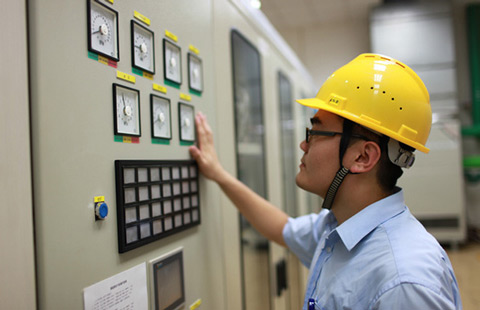Remedy for Beijing's ills
Updated: 2015-07-14 07:53
(China Daily)
|
||||||||
 |
|
A man works at a construction site at a financial district in Beijing, China, July 7, 2015. [Photo/Agencies] |
In a move to implement the national strategy of promoting the integration with neighboring Tianjin municipality and Hebei province, the Beijing government announced on Saturday that it will accelerate the construction of Tongzhou district as its "subsidiary administrative center" and relocate non-capital functions out of the densely populated city center.
At the two-day plenary session of its Party committee, Beijing's authorities vowed to address the city's chronic "urban woes", such as traffic congestion and air pollution by curbing its rapid population growth and moving some facilities to nearby regions in a bid to build Beijing into a livable capital.
Beijing has become a vibrant modern metropolis; however, traffic congestion and air pollution have worsened as its population has grown. At the same time, the "siphon effects" Beijing's booming development has produced have had an unfavorable influence on the development of the surrounding regions. The concentration of non-capital functions, such as the development of its general manufacturing, its status as a regional logistical hub, as well as its educational and medical resources, has contributed considerably to Beijing's development, but they have also made the city's development incompatible with its status as the national political and cultural capital.
To relocate non-capital functions to the Tongzhou district in an orderly manner will not only help the capital address the problems arising from the over-concentration of functions in the downtown area, it will also serve as a key step toward implementation of the national strategy aimed at promoting the integration of Beijing with Tianjin and Hebei.
The transfer of general functions to neighboring regions is not a simple industrial or environmental shift. Instead, it is an overall strategy to promote interactive and mutually complementary development with neighboring regions and address the urban problems caused by rapid population growth.
The above is an abridgement of a People's Daily article published on Monday.

 Beijing roasts in high temperature
Beijing roasts in high temperature
 The world in photos: July 6-12
The world in photos: July 6-12
 Djokovic downs Federer to win third Wimbledon crown
Djokovic downs Federer to win third Wimbledon crown
 Top 10 Chinese companies by profit margin in 2015
Top 10 Chinese companies by profit margin in 2015
 No room in the pool
No room in the pool
 Top gaokao scholars saddle up for a ride in the park
Top gaokao scholars saddle up for a ride in the park
 Girl who shoots straight with bow and arrow
Girl who shoots straight with bow and arrow
 Ten photos you don't wanna miss - July 10
Ten photos you don't wanna miss - July 10
Most Viewed
Editor's Picks

|

|

|

|

|

|
Today's Top News
Mexico: Drug lord 'El Chapo' Guzman escapes, manhunt begins
Lawyers held for 'trying to influence verdicts'
Top court official under inquiry for graft
It is wrong to label illegal immigrants refugees: Opinion
Leaders agree on partnership blueprint
New Development Bank launched in Ufa
IMF keeps 6.8% China growth view
Leaders agree on partnership blueprint
US Weekly

|

|






